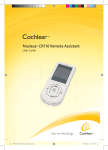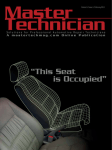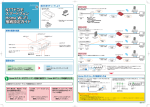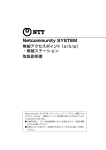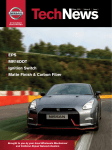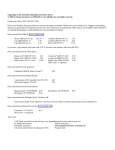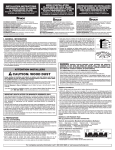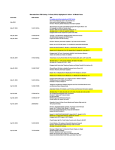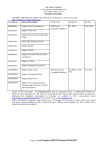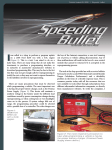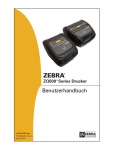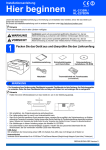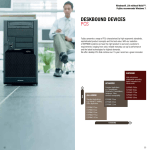Download Gearing up for Asian Repair Automotive Forensics Getting
Transcript
September/October 2011 Vol.16 No.2 Also inside: Gearing up for Asian Repair Automotive Forensics Getting Comfortable FIRE... . . . on all eight with www.startekinfo.com. Mercedes-Benz USA Dealer Workshop Services is the source for all the technical information needed to support, service, and maintain Mercedes-Benz vehicles. Mercedes-Benz workshops rely on DWS products and services for getting jobs done quickly and more efficiently. Our products include: s STAR TekInfo with WIS-net (Workshop Information System) s Electrical Troubleshooting Manuals s Installation Instructions s Technical Bulletins s Campaigns s Mercedes-Benz Special Tools STAR TekInfo Dealer Workshop Services Engineering Services, Mercedes-Benz USA, LLC. s s s s s s s Maintenance Manuals and Sheets STAR Service Manual Library CDs WIS and DAS software updates Star Diagnosis System (SDS) Operator’s Manuals and COMAND Manuals Mercedes-Benz Equipment Inventory of technical publications Sep./Oct. 2011 Vol.16 No.2 Christopher M. Ayers, Jr. President/Publisher [email protected] Bob Freudenberger Editor [email protected] John Anello • Ralph Birnbaum Steve Campbell • Paul Cortes Kerry Jonsson • Phil Fournier Chip Keen • Greg McGoniga Tony Molla • Tom Nash Henry Olsen • Dave Russ Contributing Editors [email protected] Joann Turner Circulation Manager [email protected] Christopher Ayers III Art Director, Web Master [email protected] Editorial, Circulation, Advertising Sales & Business Office: Import Service Magazine 134B River Road Montague NJ 07827 P.330.620.3929 F.330.666.8912 If you have a letter to the editor, a Tech Tip or story idea, click here: [email protected], or on our website at www.mastertechmag.com. The publisher and editors of this magazine accept no responsibility for statements made herein by advertisers or for the opinions expressed by authors of bylined articles or contributed text. The online version of Import Service magazine is free for a limited time to qualified automotive repair shop owners, managers and technicians. All other content on www.mastertechmag.com - with the exception of Master Technician Magazine ONLINE, which will remain free to qualified repair shop owners, managers and technicians - is available on a subscription basis. Cover Story Antitheft Gone Wild by John Anello The car was running prior to the battery going dead and now the shop was married to a no-start condition. 06 Feature Gearing up for Asian Repair by Christian Strohm This article underscores the value of factory scan tools and fluids as important considerations for any shop thinking about expanding its automotive repair work in the Asian market. Automotive Forensics by John Anello Our man John tracks down what that DTC was really trying to tell him. Getting Comfortable A Volkswagen TechConnect Special Feature Computer controls have made the additon of many comfort features possible, but are we as comfortable when they need to be fixed? 14 26 34 *Details available at your authorized BMW center. 4 Import service | www.mastertechmag.com Original BMW Parts www.bmwusa.com September/October 2011 The Ultimate Driving Machine® | Import service 5 A n t i t h e f t Gone Wild Antitheft Gone Wild by John Anello, “The Auto Tech on Wheels” I received a distress call from a body shop for a complaint of a no-start on a 2006 Honda Civic. The shop had just finished working on the vehicle and decided to detail the car for the owner as a courtesy. The detail guy loved his tunes so he decided to leave the ignition key on and crank up his favorite station while he was working. I could only envision this guy dancing around the car singing “Working at The Car Wash” and having a good time as he was fully unaware of the accessory position that car manufactures use to limit battery drain. When the detailer was all done with the vehicle he went to crank the engine and heard the famous slow dragging sound of the engine followed by a click-clickclick. We have all been here before and a simple jump start with a battery charger on boost mode or the use of a jumper box always gets us back on track. The jump 6 Import service | www.mastertechmag.com start attempted on this vehicle only provided an extended good crank with a no-start. The car was running prior to the battery going dead and now the shop was married to a no-start condition. When I arrived at the shop I got in the car and attempted to start it. It cranked over fine, but wouldn’t fire. I did notice one thing the body shop had overlooked. There was a green key icon flashing on the instrument panel (Figure 2), indicating that that vehicle was immobilized. This Honda uses an immobilizer receiver and control unit assembly mounted on the ignition lock housing (Figure 3). It has a built-in antenna ring that mounts directly around the key hole to read the chip embedded within the immobilizer key. The key for the car was a correct black Honda key and not a gray valet key with limited use, but I was puzzled as to why the green key on the dash Published: July 31, 2011 | Key word: antitheft wild panel was flashing. I know from experience that if the PCM was to be inoperative and the immobilizer unit lost communication with it, then the immobilizer unit will flash the green key icon. Figure 1: 2006 Honda Civic I hooked up my Honda HDS scan tool and performed an All DTC Check to see if there were any trouble codes on board and to verify that the PCM was functioning (Figure 4). I was very surprised to see no codes in memory and that the PCM was responding because I was hoping to find something to give me direction. I just sat Figure 2: Instrument panel showing green security key Figure 3: Close up view of Immobilizer Module & Antenna assembly. Figure 4: Performing ALL DTC code retrieval using Honda HDS scan tool September/October 2011 | Import service 7 A n t i t h e f t Gone Wild there for a moment thinking about what could have gone wrong. I can tell you that the worst thing you can ever do on the cars of today is drag a battery down really low on a slow crank because it can allow many controllers on board to lose learned functions. This is why certain manufactures such as BMW will not allow the vehicle to crank if the battery voltage is too low. My guess at this point was that the key’s learned memory might have been lost. At this point, I decided to relearn the key so I went into the Immobilizer menu (Figure 5) of the Honda HDS scan tool and selected “Add and Delete Keys”. The Honda scan tool cautions us not to use a key with “T5” stamped on the metal blade (Figure 6) .This is a clone key without its own identity and can only be used in a key duplicator machine used by your local locksmith. This key was a true Honda key, not a T5, so I went through the procedure to learn the key, but every time I tried to complete the procedure I received the error message “Immobilizer System is not Normal” (Figure 7). The HDS provides a help screen for this error message and directs your attention to check the PCM Figure 5: Immobilizer Menu view using the Honda HDS scan tool Figure 6: Caution screen alerting attention to using clone keys 8 Import service | www.mastertechmag.com September/October 2011 | Import service 9 A n t i t h e f t Gone Wild for a registration issue or communication issue with the immobilizer control unit. Okay, so maybe the PCM lost its alignment with the immobilizer due to a low battery condition. A lot of antitheft systems use a separate controller that will work in conjunction with the main Engine Control Module to control engine shutdown. Some systems block starter operation, while others do not, and some may even prevent spark and fuel pulse at the same time from occurring. I prefer the systems that provide a start and stall condition so at least you know you’re definitely dealing with an anti-theft issue. So now I went back to the immobilizer menu and selected “Replace ECM/PCM” to see if registering the PCM would resolve the problem. I went through the whole procedure and again the same error message “Immobilizer System not Normal.” I did not want to start playing Russian roulette here with automotive parts, but I’ve done many of these Honda anti-theft systems and whenever I’ve come across this error message it has always been a new PCM/Immobilizer Control unit that was installed or a wrong key type being used. I next went ahead and tried to realign the Immobilizer Control unit Figure 7 Immobilizer error screen view using the Honda HDS 10 Import service | www.mastertechmag.com as a last effort, but again had the same message. Now it was time to do some soulsearching in hopes of finding a resolution for for my dilemma. I started by looking through a lot of service bulletins in my AllData system, and finally came across one that seemed to fit. It was titled “Immobilizer Indicator Is Blinking, Engine Won’t Start” (Figure 8). This bulletin only pertained to 2006 Honda Civics and states that this problem will occur on this particular vehicle after a battery recently went dead Figure 8: Honda service bulletin 06-036 relating the vehicle failure September/October 2011 | Import service 11 A n t i t h e f t Gone Wild and the engine was jump started. Honda recommends replacing the under dash fuse/relay panel ECU called the MICU (Figure 9) due to its loss of the immobilizer IMOES code. Apparently, this anti-theft system has another controller in the mix that is not commonly used on other models. I might have seen the MICU within the Honda immobilizer menu on certain year/models before, but never directed my attention toward it. It just seemed crazy to have a shop have to purchase a brand-new electronic fuse panel from just a battery going dead. Then I started thinking. You know, I’m a gambler at times and it’s on the immobilizer menu so why not try to realign this MICU unit back into this so-called anti-theft network party gone wild. I now went back to the vehicle and from the Immobilizer menu I selected “Replace MPC/MICU/ IMOES” and followed the realignment procedure. I got all the way to the last step without any error messages and the car starts up and runs. Okay, now what? I have a car that runs and a shop that’s beaming with joy. I took a step back to understand what was going on here. My guess is that Honda may be having a problem with its 2006 Civics that can’t keep information in the volatile memory of the MICU unit if the battery goes too low. So the company’s resolution is to replace the unit under a quiet service bulletin without issuing a recall. What a turn of events! My only hope 12 Import service | www.mastertechmag.com is that this one keeps you from jumping the gun on replacing unneeded parts and teaches you a valuable lesson to not let battery voltage levels drop too low. Figure 9: Close up view of the under dash fuse/relay box (MICU) The Best Name on a Box is Now the Best Name on a Bottle UIN EN TM E Beck/Arnley has added a premium line of genuine OE fluids for Asian vehicles to go along with its premium line of genuine foreign nameplate parts. With our unique application specific sourcing, which comes directly from the chemical suppliers who supply the OEMs, Beck/Arnley’s fluids are performance enhancers which will keep your customers’ engines running like new. G OE FL Not all aftermarket fluids are created equally. Trust the brand that also provides the best premium genuine foreign nameplate parts. UID Keep Your Business Flowing with Beck/Arnley OE Fluids. GENUINE Foreign Nameplate Parts www.beckarnley.com To place an order today call 1-888-GO4BECK (1-888-464-2325). September/October 2011 | Import service 13 G e a r i n g U p for Asian Repair Gearing Up for Asian Repair by Christian Strohm Thinking about expanding your shop to accommodate the high demand for Asian automotive repair? This article will discuss important considerations for specialization in modern Japanese and Korean cars, and evaluate which of the many factory special tools should be the first to order. Vehicles are becoming more and more dependent upon computers every year. In fact, some repairs and services cannot even be done without the proper equipment to communicate with on-board computers. Your shop needs to be outfitted with the necessary tools and reference materials in order to get the job done. Here, we’ll explore some of the most useful gear for 14 Import service | www.mastertechmag.com the independent shop that wants to take on the Asian repair market. Engine management technology is naturally the first thing that comes to mind, and this has been changing at an incredible rate. Just because you were familiar with some of the Asian diagnostic and repair techniques of the 1990s doesn’t mean you’ll be able to survive the 21st century on that knowledge. Just take variable valve timing for example. Not only are manufacturers controlling cam timing and lift, on engines such as the Nissan VVEL the intake valves’ lift instead of a conventional throttle body to vary the cfm that enters the cylinders! Published: October 07, 2011 | Key word: outfitting asian Let’s talk computers In order to keep up with the newest automotive technologies, invest in a good computer and Internet connection. Get rid of that beat-up desktop and replace it with a high-quality, rugged laptop, and maybe consider one that has a touch screen so you can use a pen to navigate. Now, you have a mobile station that doesn’t have a touchpad or mouse that gets smeared with grease, and you can take it into the car or keep it on the bench for reference. If you’ve got a laptop and a subscription to ALLDATA, you’re going to want to set up wireless internet access – don’t worry, I’ll spare you the technobabble! The only addition should be a wireless router that you can install somewhere near the work bays for a good, strong signal. Going wireless doesn’t necessarily mean more complicated, less reliable, slower, and more expensive. Just because you’re a business doesn’t mean you need an expensive, enterprise-class router. Check out an electronics retailer and search for some home-style routers. Home routers are easy to set up, and with IEEE 802.11 security standards, they’re quite secure. Follow industry standard practices for using a strong WPA code (avoid WEP at all costs!), and you could even impress your customers with WiFi in the waiting room. Microsoft has an article on setting up wireless, so visit this website for more information: http://www.microsoft.com/ athome/organization/wirelesssetup.aspx Collaboration Look into a subscription-based service like http://www.identifix.com that helps you find possible pattern problems with the cars you’re working on. This online tool is not unique to the Asian repair market, so your shop may already have Identifix. If you’re unfamiliar with it, the site allows its members to post confirmed fixes of various repairs, and helps you search by trouble code or symptom to find helpful tips. You get the benefit of other technicians’ prior experiences to shorten your diagnostic times. Especially if you’re new to the Asian repair industry, you can begin to research common failures in your off time. Direct Hit, an adjunct to Identifix, is another great source of silver bullets. Be certain to look into the International Auto Technicians’ Network (iATN). This is an incredible resource for collaboration. Think of it as an automotive forum that has good information about whatever problem you may be struggling with at the shop. If you’re new to the Asian market, you can find loads of information about pattern failures and symptoms in the network. Register online at http://iatn.net. September/October 2011 | Import service 15 G e a r i n g U p for Asian Repair It’s also critical to develop a good rapport with your local dealerships’ wholesale departments. If you keep a regular stock order with a dealership, you’re constantly in contact with their wholesale parts department, and they may start cutting you some slack if you need to return a part or maybe ask for tips from their service department. Consider stocking automakers’ O.E. specialty fluids. For instance, having an identifiable, colored factory fluid on hand makes your shop appear to specialize in that manufacturer’s cars when performing services. Many Japanese manufacturers use any color BUT green, so consider stocking From the Freeze Frame Data screen on the Nissan CONSULTHonda’s blue, Toyota’s III, you can see the advanced diagnostic work support buttons. With one press, you can perform a DTC check, access BiPink, Mazda’s orange directional controls, monitor Live Data PIDs, check the CAN and yellow, Subaru’s bus tree for faults, graph and record desired sensor outputs, blue for their newest, along with anything a basic scan tool can perform. and Nissan’s green. Are they all really different? That’s an entire different article, but remember that discerning customers will know that their cars used to have a certain color fluid. So, don’t lose out on longMazda Gold. Mazda Green Mazda Orange term customers by Using a factory fluid for its intended application is one aspect of using generic antifreeze specialization. Mazda has three different colors and mixtures! Does it make sense for your shop to stock all of them? in everything. 16 Import service | www.mastertechmag.com KANSAS CITY March 8 - 11, 2012 Conference: March 8-11 Expo: March 9-10 Four days of power-packed automotive service training! Top trainers in the industry Select from 70 training sessions Plus...60,000 sq. ft. exhibit hall with the latest tools & technology www.visionkc.com September/October 2011 | Import service 17 G e a r i n g U p for Asian Repair Specialization Factory service tools may seem expensive, but without them you cannot complete certain repairs, or you’ll spend extra hours “making do” with alternative methods. This section should help you explore whether it is necessary to invest in a particular factory service tool. Being able to offer the same services that a dealership offers – short of warranty repairs – is a good marketing opportunity, as well as a way to grow. Only you can determine how much to actually invest in special, factory equipment for servicing the most common Asian auto makers. If you plan to start working on Toyota, Honda, Mazda, Subaru and Nissan, does it make sense to get every special computer and online subscription? Read on to find out more about what might work best for your shop. The most important factory tools for modern cars are the factory scan tool and a subscription to the manufacturer’s technical website -- most call their online subscription some form of “Techinfo.” Without the scan tool, it will be impossible to perform certain “simple” service tasks on modern cars in a factory-approved method. PCM programming and certain Above: You won’t have to fear bending a valve or chipping the plastic sprocket on a Subaru if you’re using this SST# 499207300. Invest in specialty tools to increase your shop’s efficiency. The Toyota Techstream is required to program the 2nd Generation Prius Smart Key (right), and the 2010-2012 Prius key (left). It is also required for performing brake flushes on some vehicles, as well as other services. 18 Import service | www.mastertechmag.com security features like immobilizer key systems will also require a subscription to repair. If you want to do the job right, you will have to invest in the correct tools. Other specialty tools are important, but only if you plan to do specific repairs repeatedly. For example, the Subaru cam sprocket holder is necessary for replacing the head gaskets efficiently. It will also allow you to more easily remove the cam sprockets to service the cam oil seals. Considering the sheer number of failures in Subaru head gaskets, this particular tool is a great way to avoid chipping the plastic cam gears when trying to hold them using incorrect tools. Each manufacturer will have a special service tool (SST) distributor company. In this instance, contact SPX for Subaru tools at http://subaru.spx.com. If you’re on a tight budget, Techinfo sites have options for purchasing a “guest pass” that will allow you access without having to subscribe for an entire year (you can add the charge to the customer’s bill), Consider “test driving” the factory Techinfo pages to see if they will be necessary to your shop. These sites will have updated TSB or recall information that even good sites like ALLDATA don’t have. The service manuals on the Techinfo sites will often allow quick hyperlink navigation from one repair to another, or from the diagnostic tree to the appropriate fix. More computers? What’s so special about the factory scan tools? Why should you even consider a factory tool or information system when you already have something that seems to be good enough? Again, it depends upon what type of Asian repair work you plan to be doing. Here are a few examples of simple services you may not be able to do without the factory scan tool: 1. The Toyota Prius brake fluid flush requires a scan tool that has bidirectional controls -- the brake pedal is not physically connected to a master cylinder! The pedal sends a request to a computer that calculates whether or not the service brakes need to be applied, or if regen will be enough. Without the tool, you’re just pushing on a pedal attached to a sensor, not bleeding any fluid. 2. Honda’s 2005 and newer maintenance reminder system requires the factory scan tool to clear history of service items that were completed, but not displayed September/October 2011 | Import service 19 G e a r i n g U p for Asian Repair on the dash. For example, if you sell your customer transmission fluid service, but the minder only displayed “A1,” without properly clearing the reminder, the customer may get a minder item “3” for transmission fluid service shortly after he leaves. It makes you appear unprofessional, and it may even cause the customer to begin to doubt whether you did what you said you did. When you clear the indicator without the scan tool, it only resets whatever is currently displayed. 3. Modern cars have proprietary information codes associated with the OBD II- compliant DTCs. For example, your generic scan tool may display a Prius with fault P3120. In fact, many generic scanners won’t display the P3XXX codes at all! Not only will you have to look up what the “plain English” translation of this code means using the repair manual, you won’t have a critical information code. P3120 is listed as “HV transaxle malfunction” – how useless is that? You’ll have to spend more energy on research and diagnosis, but if you had the TechStream to output the information code 250, and a subscription to the Toyota 20 Import service | www.mastertechmag.com Information System (TIS), you can cut to the chase: “If information code 248 or 250 is output, replace HV transaxle motor.” There is no other diagnostic procedure. 4. OBD II compliance does not require that a manufacturer make every on-board computer fault accessible with generic scan tools. We see a lot of vehicles come into our shop without the MIL on, but the owners are complaining about a symptom. With the Nissan CONSULT, we can access the body ECU and find faults associated with the HVAC or headlight control on a 2008 Infiniti EX35, for example. You can eliminate tremendous amounts of time spent following step-by-step testing when you short circuit the process with a factory scan tool. There are many more instances where you cannot complete a repair without a factory scan tool. Modern transmissions that are CVT style, or do not have a fill tube must be operated and drained using the scan tool for operating temperature monitoring. Does your customer want to buy a new Smart Key for her Prius, or does her husband’s Mazda need an immobilizer RFID key programmed? If you’ve done all the other work on those September/October 2011Tech | Import Nissan & Infiniti News service | 21 21 G e a r i n g U p for Asian Repair cars up to this point, do you really want to send them to the dealership? Referral to the dealership will start your customers thinking that your shop is not equipped to handle difficult problems. Consult this table (Figure 1, below) to find the names of the factory scan tools, the Techinfo sites, and the approximate costs. Anecdotally, our shop finds the Techstream to be the absolute best scan tool in form and function. It is used the most here, considering how much Prius traffic we see. The Techstream also has an on-board engine analyzer and generic OBD II capabilities that can also output Mode 6 data. The second most-used tool is likely that for Honda, considering that Manufacturer Scan Tool Cost $7995 (+2 year subscription) $1345 (+1 year subscription) all the maintenance minder prompts require the HDS to reset the system. Nissan and Infiniti sites are very useful, but the CONSULT III, while very powerful, tends to not see a lot of action. Subaru, nearly the most expensive scan tool and subscription, seems to be the least used of all, followed closely by Mazda. All are required for immobilizer repairs and PCM/ECU calibration, as well as for efficient diagnosis and repair of EVAP systems, and much more. Immobilizer and security feature work will require a locksmith license. If you expect to see customers wanting replacement RFID keys, you should research and determine whether registering as a locksmith is right for you. Techinfo Site Yearly subscription $400 for standard $1095 for professional (required for use of Techstream) Toyota Lexus Scion TechStream Lite (Dongle for use with existing laptop) Honda Acura HDS $2095 (requires WinXP laptop) https://techinfo.honda.com $840 Nissan CONSULT III (For 2005 and newer) Call for current price http://nissanconsult. spx.com/ http://www.nissan-techinfo.com $720 Infiniti CONSULT III See Nissan http://www.infiniti-techinfo.com $720 (does NOT overlap with Nissan) Mazda IDS (Same as Ford) $2714 http://rotunda.spx. com http://mazdaserviceinfo.com $1500 SSM $3444.97 Search P/N http://techinfo.subaru.com 22771AA030 http://subaru.spx.com Subaru Figure 1 22 Import service | www.mastertechmag.com https://techinfo.toyota.com $2499.99 Even with the factory scan tools, you will be required to input your locksmith federal identification number (LSID). Don’t be locked out of some repairs when you don’t need to be! Find more information at https://www.aloa.org/. Training If you’re going to work on Asian cars, you should invest in training and seminars to help identify pattern problems. We get a lot of cars from other shops with symptoms that are obvious to us, but those shops have replaced the common failure items on non-Asian cars: new fuel pump and filter, but the car still cranks and doesn’t start. We know from training and experience that it’s more than likely a bad EFI main relay or primary ignition part, not the fuel pump. What might work for domestic or European cars with the same symptom won’t necessarily fix Asian cars. Proper training will save you time, comebacks, and wasteful part installations. Investing in training will help avoid years of hard work doing “in-house” trial and error, replacing the wrong parts, and maybe even losing long-term customers. Use training seminars to get familiar with the operation of hybrid vehicles as well. A large portion of the Asian market share is in hybrids. If you see a lot of Priuses in The Finishing Touch In Customer Service! Broadway Car Wash Equipment Company Partners with the Autohaus Concept! SPACE EFFICIENT Different models to fit almost any space QUALITY WASHING SomeofOurNationwide Mercedes-BenzPartners: NewCountryMotors Hartford,CT ScholfieldMotors Wichita,KS Thirty years of proven history QUICKER RESULTS Mercedes-BenzofSmithtown SaintJames,NY Complete wash in 2 minutes or less EASY TO USE OPERATION W.I.SimonsonMercedes SantaMonica,CA LASTING DURABILITY Mercedes-BenzofSanAntonio SanAntonio,TX Simple operation increases efficiency Aluminum frame provides durability 2011 | Import service Broadway Equipment Company • 1-800-976-WASHSeptember/October • www.broadwayequipment.com G e a r i n g U p for Asian Repair your area, think of all the possible work you could be performing if you’re familiar and equipped to handle Toyota’s most popular hybrid. Then, of course, there are all the other hybrids from Lexus, Honda, Nissan, etc. Training sessions will get you and your techs accustomed to the hybrid drivetrain and will remove the mystique surrounding these cars. They may be different, but they aren’t impossible for an independent to work on by any means! Keeping current with training can make sure your shop stays aware of the manufacturers’ changing recommendations. Without being aware that many manufactures are shifting to synthetic oil, a routine oil change could cause severe engine damage, invalidate the customer’s warranty, and your shop could be on the hook for a whole new motor! Synthetic oils make the service a whole lot more expensive than you might quickly estimate on the phone. If you know the European or domestic market, think of taking on the Asian market by learning a new language, one that more and more customers are speaking as Japanese and Korean vehicles increase in popularity. Gear up your shop properly, and you won’t have to turn away lots of potential new business. The Toyota TechStream can be purchased as a rugged, heavy-use laptop. If you have an existing laptop, you can purchase the Techstream Lite for use on it. Pictured here is the Nissan CONSULT-III, with Plus software and Techstream Lite installed. The clear OBD II connector between the two laptops is the Toyota Techstream Lite. Both Laptops feature capacitive touch screens that work without a special pen. Import service | www.mastertechmag.com A N e w I N d u s t ry s tA N dA r d IN s h o p M A N Ag e M e N t s o f t wA r e . EMPOWERMENT: Control your business Own the software and your data Connect & communicate with your PC based shop equipment Order parts electronically from vendors of YOUR choice Import labor times from ALLDATA and others Get the answers you need from GO’s unique reports BRAGGING RIGHTS: Regular updates & basic support for one low monthly fee. Continuous review and refinement from IATN, GO Users Forum. Selected as the exclusive shop management software for the AAIA Shop Of Tomorrow. See “Empowerment” above Visit www.garageoperator.com for more information. www.mastertechmag.com | Import service 25 September/October 2011 A u t o m o t i v e Forensics Automotive Forensics Our man John tracks down what that DTC was really trying to tell him. o ut A e n h Jo by e An ,“ llo ch Te on e he W Th I was called in to a shop for a MIL-on (Malfunction Indicator Lamp, a.k.a. “CEL” for “Check Engine Light”) situation in a 2000 Toyota Solara with the 1MZ-FE engine (Figure 1). The shop had replaced two air/fuel ratio sensors, but the MIL came back on after the vehicle was delivered to and driven by the customer. The tech had checked all the fuses, but could not locate the source of the circuit problem affecting the sensors so he wanted a second opinion to get this monkey off his back and down the road. It was bad enough that the shop had replaced parts that were not needed, 26 Import service | ls” www.mastertechmag.com Figure 1: 2000 Toyota Solara Published: September 30, 2011 | Key word: forensics but now the customer was putting pressure on the shop to get the car fixed, or he wanted his money back. We’ve all been down this road and it’s not a good feeling because you know whatever turns up is going to have to be fixed at your expense and chalked up to the neverending automotive learning curve. When I arrived at the shop, I noticed that the MIL was on so I opted to hook up my Toyota Techstream scan tool to see what codes were stored in the PCM. I selected “Trouble Codes” from the menu and found five codes stored in memory (Figure 2). Two of the codes, P1130 and P1150, were related to a range/performance issue with both upstream air/fuel ratio sensors. The next two codes, P1135 and P1155, were related to a heater circuit malfunction in both of those sensors. The fifth code P0125 (Insufficient Coolant Temperature for Closed Loop Fuel Operation) is one that takes many scan tool gurus down the wrong diagnostic path. They often mistake this as an indication of a bad engine thermostat when in reality it is letting you know that the air/fuel ratio sensor can’t reach its proper operating temperature due to a heater circuit problem. Figure 2: Codes retrieved in ECM using the Toyota Techstream scan tool. September/October 2011 | Import service 27 A u t o m o t i v e Forensics Looking at the main four air/fuel ratio sensor codes, you need to divert your attention to heater circuit faults because if one is present range/performance codes will always be set as a secondary fault. If you think about it for a moment, you’ll realze that it’s not very likely that two A/F sensors would go bad at the same time, or even two heater driver circuits. It’s much more likely that something common to both heater circuits is at fault, such as a power feed source. Streamlining diagnostics like this cuts your chances of taking the wrong diagnostic path, so it’s important to use some “street smarts” when you approach a problem. It becomes a matter of automotive forensics to sift through the information you’ve gathered from your tests to see what’s really pertinent to the problem, then to apply logic. Mode 6 is a scan tool feature that isn’t used by techs in the field nearly as often as it should be. This is mostly due to the unfriendly user interface that most scan tools, including factory units, provide. Toyota, however, has done a phenomenal job making things easier through hyperlinking. You go to the “Monitor” selection menu and there you will view all the monitors with their pass or fail status (Figure 3). Notice how the thumbs-down sign for O2 heater failure instantly draws your attention with a universal language. Figure 3: Viewing the OBDII Monitors using the Toyota Techstream scan tool. 28 Import service | www.mastertechmag.com September/October 2011 | Import service 29 A u t o m o t i v e Forensics Click on the thumb and it will hyperlink to Mode 6 test results that are easy to read (Figure 4). By looking at these readings you can see that both upstream A/F sensor heaters failed to achieve the minimum current threshold of 2.492 amps -- their test value was at 0.221 amps. By viewing the threshold information, you can conclude that both heater circuits pulled almost no current, which is an indication of an open circuit for both banks. This scan tool is hooked up live to the Toyota website through a subscription, so all I needed to do is use the “TIS Keyword” menu selection, which took me directly to Toyota’s website search engine. By placing the heater code P1135 in the keyword window, I was able to do a full search of the Toyota website and be directed to linked information to help me further my diagnostics (Figure 5). I clicked on the Repair Manual link for the code and it hyperlinked me to all the information I needed to perform my diagnostic tasks (Figure 6). You’ll notice the simplified layout of the DTC description, followed by circuit description, wiring diagram, and inspection procedure. The information on this page listed the code as two-trip Figure 4: Viewing the Mode 6 results of the O2 sensor heater Using the Toyota Techstream scan tool. 30 Import service | www.mastertechmag.com detection logic and provided a maximum 8.0-amp or minimum 0.25-amp threshold for code setting. I used the hyperlink DI-225 under “Wiring Diagram” and was linked to an isolated diagram of the heater circuit (Figure 7). By power-flow checking the diagram, you can see that power feed to the heating elements is supplied through the A/F heater relay contacts from an A/F heater fuse. I located the relay in the engine compartment relay box #2 and turned the box over to backprobe the relay contacts (Figure 8). The test light lit with the key on indicating that power was being supplied to wires leading to the sensors’ heaters. I next unplugged the Bank #2 A/F sensor connector located at the back of the engine to test it for power and found nothing there (Figure 9). There was an open circuit between the relay panel and the A/F sensor connector. When looking for an open circuit, you need to find out where the circuit begins and where it ends. Then, try to visualize how the circuit is routed -- it’s almost like using X-ray vision. Next, find an accessible midpoint. This location will help you to determine if the problem is forward or backward of the area you have chosen. Start homing in on the open by tapping into the circuit with a test light to Figure 5: Search results using the Toyota TIS website for trouble code information. September/October 2011 | Import service 31 A u t o m o t i v e Forensics validate power feed. The midpoint I chose on this vehicle was the battery tray because the harness ran under the battery, then towards the rear of the engine where it was supposed to feed the bank #2’s A/F sensor connector. When I removed the battery and battery tray, I immediately noticed Figure 6: Repair manual information for code P1135. a crushed black wire housed in a conduit that was unplugged. It seemed to fit the description of a black wire that fed thesensor’s heater circuit. I decided to plug it back into a mating connector located under the left front fuse/relay panel (Figure 10) and restored 12V to the vehicle by using a jumper box so I could recheck the circuit. Once I did this, power appeared in the sensors’ heater circuits. It was like hitting the lottery. What are the chances of finding a connector that someone left unplugged, buried, and crushed under a battery tray? It makes you wonder about other techs/ mechanics in the field and how they can be so incompetent as not to remember to put something back the way they found it. This situation seems to be becoming more common with all the distractions around us 32 Import service | www.mastertechmag.com Figure 7: Hyperlinked wiring diagram of the O2 heater circuit. while we work. Maybe the tech was returning a Tweet or updating his Facebook account. Who knows? We can also lose our focus and mindset when working on cars today because of time pressure from either the boss or the flat rate. Thanks to OBD II systems and the comprehensive tests they perform on modern cars, the onboard monitors usually won’t let a vehicle drive more than three roads trips before the MIL is lit. But what bothers me is how a job like this always winds up in another shop that had nothing to do with the prior repair. Perhaps this is a job-security feature built into our business to keep us going. Hope this one hits home for you -- take it slow! Figure 8: Back probing the O2 heater relay to check contact feed to O2 heaters. Figure 9: Testing the B2S1 O2 heater connector for power supply. Figure 10: Open O2 heater circuit under the battery tray. September/October 2011 | Import service 33 G e t t i n g C o mfortable Getting Comfortable Computer controls have made the additon of many comfort features possible, but are we as comfortable when they need to be fixed? 34 Import service | www.mastertechmag.com Published: October special 18, 2011 | Key word: VW u HVAC Volkswag en techconnect feat re How you feel about progress depends on which side of the technical-knowledge fence you’re on. Some shop owners and technicians love it -- others hate it. What happened to the days of relays and switches? Well, simply, they’re gone, and for some good reasons. Modern European-engineered vehicles are marvels of technology. They have multiple networks and gateways to link the networks. If individual wiring were to be used in place of networks, it would add a significant amount of weight to the vehicle, take up valuable interior space, and make it harder to diagnose and repair wiring problems. Networking also allows for different features and functions with an added measure of safety. For example, if somebody’s arm gets caught in the window while it’s closing, a door control module can see the increased current draw of the motor and reverse its direction before there’s an injury. All power windows and door locks can be controlled with the push of a button. Seat positions can be memorized with presets. The features go on and on. Need VAG The downside of all this safety and convenience is the complexity of the diagnosis when something goes wrong. Is it the switch? Is it the control unit? Is it the network? With proper training and an understanding of how these systems work, you should be able to diagnose most problems in a reasonable amount of time. There’s no doubt that diagnoses would be very difficult without a VAG 5054, or its equivalent. Communicating with control units and looking at data inputs would be practically impossible while modules are communicating with one another. You can put a scope on them and verify that the network is up, but the actual messages must be interpreted by a scan tool. You should know the framework of the networks so you can develop a diagnostic plan. You’ll also need to do September/October 2011 | Import service 35 G e t t i n g C o mfortable some electrical testing. Each control unit still must have power and ground, so don’t put down your digital multimeter just yet. The first thing you need to know is that not every Volkswagen vehicle has the comfort system. It first appeared in the 1998 Passat, and was added to the Jetta and New Beetle models in 1999. It is only installed on vehicles with power windows. Those with manual windows have a central locking module with some convenience features. When using your VAG 5054 or equivalent, enter word address 35 for the Central Locking system, and address 46 for the convenience module. This module, sometimes referred to as the Central Control Module, handles the interior lights, trunk lock, keyless entry, alarm with starter lock-out, sunroof/ window/central locking signals, and scan tool communication. It communicates through what is known as the CAN-Bus. In the case of a 2000 Passat, the wires involved are Orange with a Brown tracer and Orange with a Green tracer. They start at the convenience module and are connected to each door module. Yes, each door has an individual module. Your scan tool never comes in contact with these CAN-Bus wires. A separate K-line connects the convenience module with the diagnostic connector. The central control module is mounted just in front of the front seat, underneath 36 Import service | www.mastertechmag.com Pulling out the central control module housing reveals that it’s filled with water, which will obviously have an adverse effect on electrical connections and control unit functions. Find the source of the water leak! the carpet. Like the door modules, the central control module works with the Memory Seat/Mirror Control Module as part of the Comfort System. To access selfdiagnostic information, don’t look in the convenience module. Instead, enter Seat Adjustment Driver’s Side directly using address word 36. For the seat adjustment module, all switch inputs, and seat and mirror motor controls are directly wired to the seat adjustment module. They communicate, along with the driver’s door module, through a separate A-Bus. This only relays this information to the central Volkswag en techconnect special feat u r e Replace — We replace more parts than aftermarket brands. Engineered — Designed to meet original OEM drawings. Manufactured — Made with same OE components as factory parts. Assembled — Completely assembled from components and not just repaired. New — Tested to new unit standards. It,s All In the Process Remanufacturing Process (Genuine Mercedes-Benz) 1. Dismantle core and clean all components. 2. Replace key components 100% with new OE part. 3. Test all other critical components. 4. Replace components that do not meet specs. 5. Assemble, test and box. Rebuilt Process (Typical Aftermarket) 1. Identify damaged part or parts. 2. Replace damaged part with non-OE part and clean. 3. Re-assemble, test and box. Remanufactured for Mercedes-Benz by Available through your local Mercedes-Benz Dealer September/October 2011 | Import service 37 G e t t i n g C o mfortable control module through the A-Bus. When the ignition is switched off, the driver’s door module puts out the command to go into sleep mode. Only the anti-theft warning light (controlled by the driver’s door module) and the keyless entry antenna (controlled by the central control module) are still active. Functional testing Battery draw is now reduced to acceptable levels. If there’s an overnight battery drain, you may want to look into the driver’s door and central control modules first. The driver’s door module is looking for all the doors, trunk and hood switches to indicate closed before sleep mode is activated, so make sure all of these switches are working. You can check them manually, but door panels will have to be removed. It is much easier to look at measuring blocks to observe the switch states. The central control module stays active for about 10 minutes except when a door is opened, and then the system starts to go to sleep. These systems have a lot of features, and you’ll find some of the best testing you’ll be doing will be of the functional variety. Functional testing is simply operating all of the inputs and seeing what works and what doesn’t. How is functional testing going to help you? 38 Import service | www.mastertechmag.com Here, a connector is corroded, affecting electrical signals. Connectors and their pins are available for purchase from your Volkswagen parts supplier so they can be repaired. If there is corrosion inside the module, either on the pins or on the board, you will need to replace the control unit, and the new one will have to be coded. You can enter the old code if it’s available, or you can code it from a list of features. Volkswag en techconnect special feat u r e Let’s look at the power window features of the comfort system. Part of it is how all of the vehicle’s windows are controlled from the driver’s side door switch. If you unlock the driver’s door, either that door will unlock or all of the doors will unlock, depending on the coding of the central control module, but more on that later. Insert the key and unlock the driver’s door. If you continue to hold the switch in the unlock position, the driver’s window should move in the open position. This means the key unlock switch is sending a good signal to the driver’s door module. Hold the unlock position even longer and all of the windows should start to move down. If they don’t, you know there’s a problem with the CAN-Bus. The same can be said for the lock position except all of the windows will close. If all but one or two windows go down, you know you have a problem with those individual door modules or components. Functional testing is merely observing what is working and what isn’t. Make sure the cowl drains are not clogged, which would allow standing water to migrate into the body. This can build up underneath the carpeting without the customer even knowing. On Passat models, this means removing the battery for access. September/October 2011 | Import service 39 G e t t i n g C o mfortable If the driver’s window did not go down, you may have a bad key switch. At this point use your VAG scan tool (or equivalent) to monitor the door key switch input. If you see it does not function properly, you now have a good reason to remove the door panel and check the switch electrically. You may have a broken wire or a bad switch in the locking latch assembly. If the driver’s door window went down, but the others did not the CAN Bus may be down. You can watch these signals in the convenience module (word address 46). If the measuring block data is indicating the switch is working in the door module, but not the convenience module, you may have problem in the wiring. Check the door jam first -- since these wires have to bend during opening and closing they are a likely trouble spot. If the wiring is good there, the next stop should be the convenience module itself. Central controL While scan data is a tremendous time saver, you cannot over look the need for electrical testing. The central control module is the brains of the operation. You can perform a lot of electrical testing right there. By moving the driver’s seat all the way back and removing the plastic rocker panel cover, you can reach under the carpeting and remove the convenience module housing. There is enough wiring slack to pull it out from underneath the 40 Import service | www.mastertechmag.com The sunroof drain is also a source of water intrusion. Make sure the orange rubber line is seated in the grommet and directing water outside of the cabin. These parts are available from your Volkswagen dealer. carpet. Look at the electrical connections. You can use a lab scope to see if the CANBus signals are making it to the module. These are redundant signals, so you will see CAN-High and a CAN-Low that should mirror each other. If the module’s connectors are corroded with green copper oxide and it’s sitting in a pool of water, you’ve probably found the source of the electrical problem. Volkswag en techconnect special feat u r e On vehicles with sunroofs, the drain can get clogged or come out of its rubber grommet mounted in the “A” pillar. This will allow water to find its way to the floor pan area. You may also have a leaking door seal, or possibly the owner left the door open or the window down while it was raining. Either way, you will have to determine if the control unit is salvageable. The connectors and electrical terminals are available from your Volkswagen dealer, so the harness can be repaired if necessary. Chances are if the control unit is waterdamaged there will be other symptoms. The central control module controls many items listed earlier such as starter lockout, trunk lid opening, etc. You should perform more functional testing to verify whether or not the convenience module is bad. What other systems should you test before condemning and module? Interior light control and keyless entry systems seem like good choices. Interior lighting is completely controlled by the convenience module. If the interior light switch is turned to the door position, the door switches indicate unlock, the door is opened by means of the inside handle, or the ignition key is removed, the lights will stay on for 30 seconds after keyless entry. The lights will shut off when you close and lock all of the doors. If the interior lights are switched on, the convenience module will shut them off in an hour to save the battery. Lock it Keyless entry is also part of the central control module. The antenna runs along the bottom of the door sill and goes directly into the convenience module. When the keyless entry buttons are activated to lock the doors, they should lock, any open windows and the sunroof should close, the interior lights should go out, and the alarm should be armed. There is a button to open the trunk or rear lid. Pressing “Unlock” will disarm the alarm, turn on interior lights, and open windows as mentioned earlier. The central locking system is also a major player in the comfort system. Keyless entry transmissions go directly to the convenience module. Key switch input signals go directly to the driver’s door module. Either way, these lock or unlock commands pass through the CAN-Bus and are sent to the other door modules. The alarm will also be activated or deactivated if locked or unlocked respectively. Individual doors can be locked from the inside handle, but the driver’s door module can lock and unlock all the doors by means of switch input. Either through “Adaptations” or “Coding” you can change the way features work. For instance, with Selective Locking only the driver’s door is opened with the door switch or keyless remote. If selective locking is not coded into the module, then all of the doors will September/October 2011 | Import service 41 G e t t i n g C o mfortable lock and unlock at the same time. Coding will need to be performed on a new central control module. Coding What is coding? Each control unit can be used in several different models, and these vehicles may have had different equipment installed at the time of production. Even though these features are available, the customer may want various functions to react differently. For this purpose we have control unit coding. Through your VAG scan tool you can enter coding word address 07. The coding number is going to change depending on what features you want turned on and off. Each feature has its own number. By adding up these numbers you can only come up with one possible total for active features. When the convenience module sees this specific number, it knows what features were turned on and which ones were turned off. You can turn on or remove specific features only by adding the features that were turned on. You cannot subtract these numbers since you do not know which features were turned on and off to begin with. should give you an indication of where the problem is. This way, you only remove the body panels you need to access for electrical testing. This will save you time and your customer money. We can’t think of a better way to do business. This is a special feature reproduced from Volkswagen TechConnect magazine. TechConnect is produced by ADM on behalf of Volkswagen of America, Inc., National Parts & Service group, as part of their support of professional independent service providers who service and repair Volkswagen vehicles. For more information on TechConnect magazine and the appropriate VW websites for genuine Volkswagen repair information, please contact your local VW dealer parts department. www.vwparts.com Your OE source for Genuine Volkswagen Parts VW TechConnect SpringSumm2011:March2005TechDrive Knowing how these systems work is half the battle in diagnosing body control system problems, and will allow you to use your scan tool more effectively. It 3/30/11 6:42 AM VolkswagenTechConnect Your Source for Genuine Volkswagen Repair Information Volume 3 Number 1 Spring / Summer 2011 42 Import service | www.mastertechmag.com Page 1 Volkswag en techconnect special feat u r e No matter what kind of car you’ve got in your paint shop, a perfect color match is always the goal. And that’s where BASF Refinish breaks from the field. Only BASF offers the COLOR-MAX®3 system, which covers every color category in the spectrum and only uses chips sprayed with authentic BASF Refinish paint—not printed with ink. So you are assured a precise match the first time, every time, reducing comebacks and increasing productivity. And remember, BASF Refinish coatings are already approved for use by most major OEMs in North America. For the kind of color matches that also match your customers’ expectations, call your local BASF distributor at 1-800-825-3000 or visit www.basfrefinish.com. FooseTM, Chip FooseTM, Foose DesignTM and the Chip Foose signature are registered of Foose Designservice Inc. and used with permission. 43 September/October 2011trademarks | Import © 2009 BASF Corporation. Master O TechnicianONLINE mastertechmag www. .com s side: Also In y Diagnostic g lo o Top tz stic Bli Show Diagno ational Auto n r gis NY Inte Warrior: Stur d n e Week 2011 1 st Augu g.com chma terte .mas www : sian inside for A Also p u nsi ing Fore Gear e iv t bl mo orta Auto Comf












































